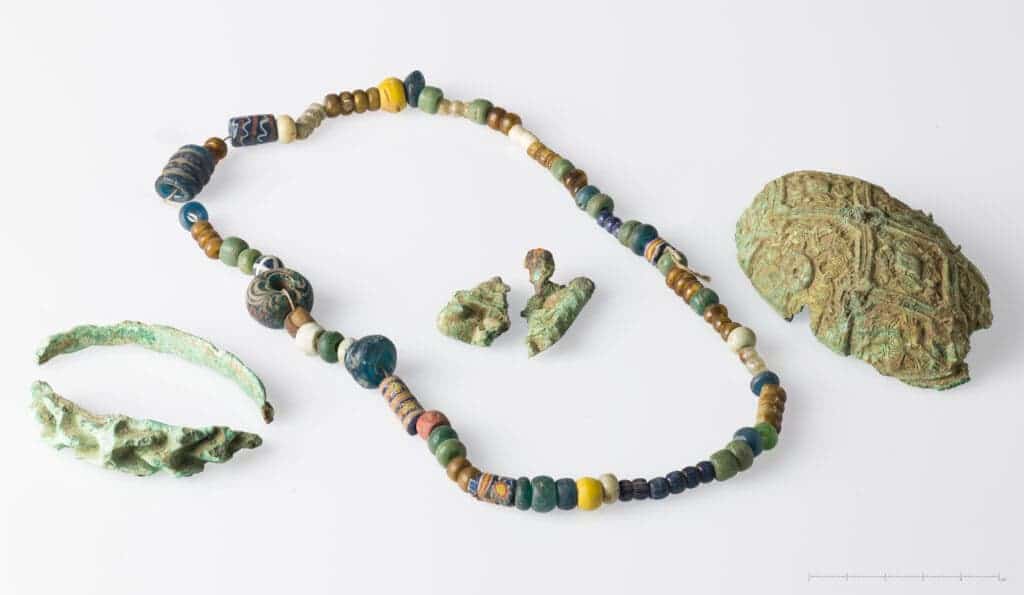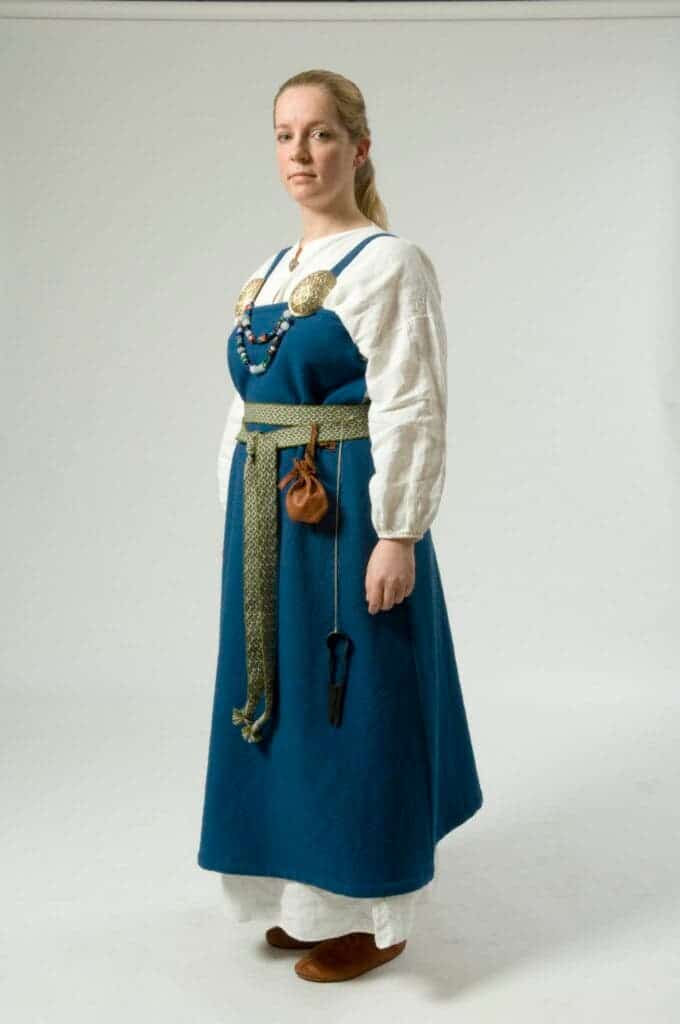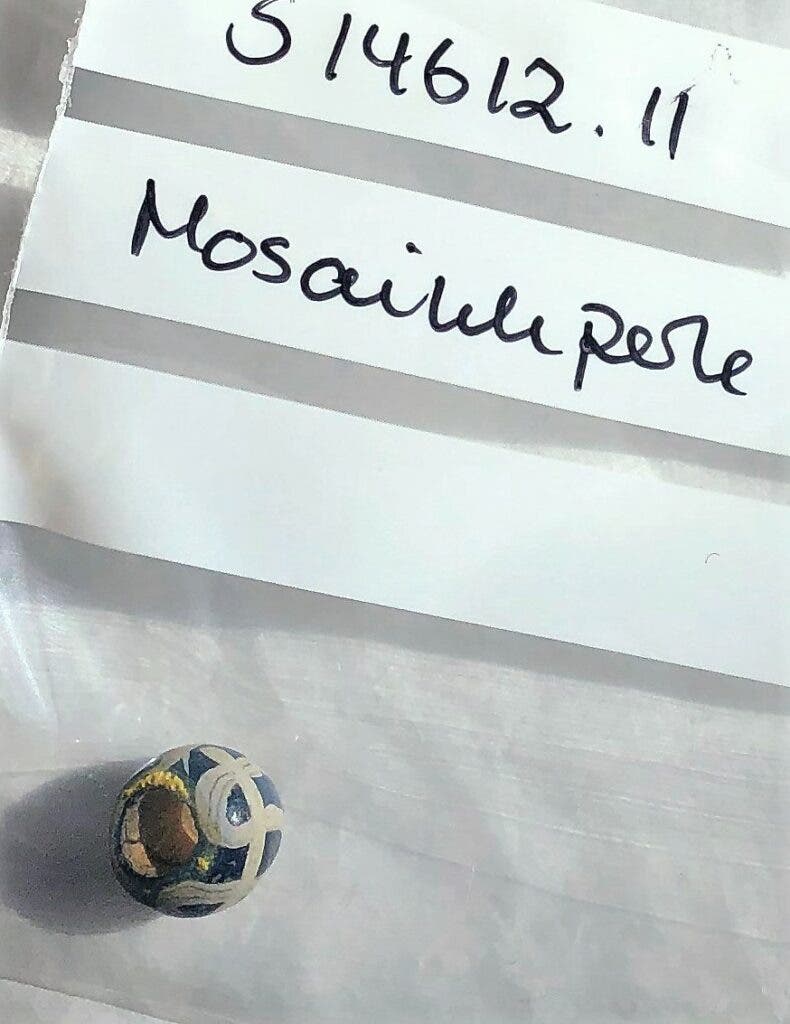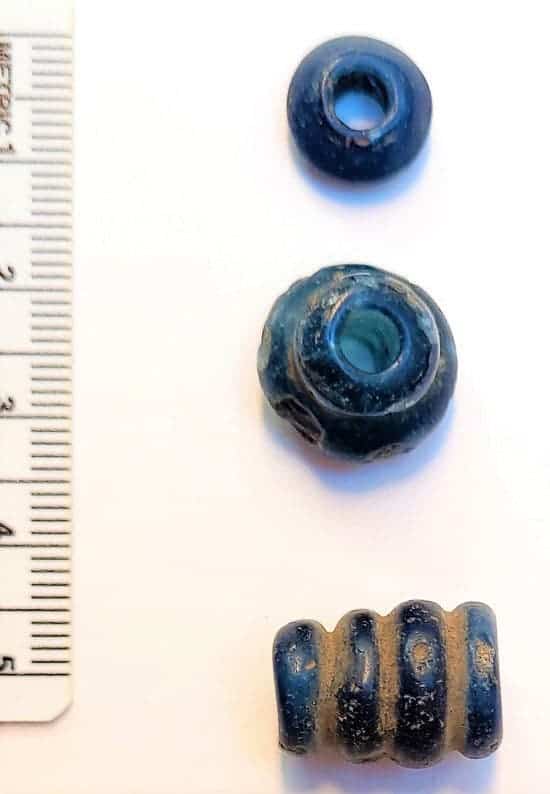When archaeologist Kristine Orestad Sørgaard in Oslo received a donation of what appeared to be medieval jewelry, she almost couldn’t believe her eyes. She hardly needed a second look to realize what it was: typical Viking dress accessories, delivered straight to her door, without even needing to dig.
“We often receive finds from private individuals, but never a find of this size. This is truly a magnificent find and even one we rarely come across on our own excavations”, she says.

Viking jewels
Sørgaard hardly needed to cast a glance at the jewellery to date them:
“This find is typical of the Viking Age. Both the oval brooches with silver plating, the equal-armed brooch and the two bracelets are typical of the period. In addition, the woman had brought with her a string of beads with over 50 beads”, she says.
The brooches would have held up a dress and are fairly characteristic in women’s graves from the Viking Age. In particular, one mosaic bead dates from around 850, which helped archaeologists be more certain about dating the entire array of jewelry.

The beads include silver- and gold-foiled beads, which mimicked solid silver and gold — a type of jewel that was very popular in Viking times. Oval or tortoise brooches are often found in Viking burials, and they also offer an indication of the person’s hierarchical status. In Viking society, women would have been able to be a part of all social layers. In fact, one famous Viking burial (the Oseberg ship burial) was so rich and ornate that archaeologists initially thought it must have belonged to a man — until they found the remains of two women on board. More recent research shows that Viking society offered significant social mobility for women as well.
The site where the findings come from is also interesting: on the southwest coast of Norway, in a county called Rogaland, a village called Frafjord.
The diverse jewelry hints at flourishing international contacts. The woman would have been in contact with people far away and likely was part of a group that was involved in trade (or plundering). Oval brooches of this sort were mass-produced in another part of Norway, while several of the beads may have actually come from the Mediterranean or the Middle east.
“The Frafjord woman belonged to the upper strata of society because not everyone was fortunate enough to wear such jewelry. The jewelry showed not only what status she had in this life, but also what social position she should take in life after death, and were thus important social markers, not only on earth but also in the hereafter”, Kristine Orestad Sørgaard explains.
The village has around 100 inhabitants now, but it could have been much more important a few centuries ago. In fact, it was probably important before the Viking Age.
“A lot of objects have been found in Frafjord and in the southern parts of Ryfylke from the periods before the Viking Age, but very little from the Viking Age itself. Obtaining such a piece in the history of the area is therefore very valuable”, says archaeologist Barbro Dahl, who has conducted many archaeological investigations in the region

An archaeological puzzle
In fact, the jewelry may help solve a decade-old puzzle. In 1955, Norwegian archaeologists excavated a Viking Age boat grave in that exact same spot, finding a boat of over 7 meters long and remains from a woman that was buried with an axe, a shield, scriss, and a weaving sword — but no jewels.
This puzzled archaeologists at the time, because based on other similar findings, there really should have been some jewelry as well.
“It is tempting to conclude that this is in fact the missing jewellery”, Kristine Orestad Sørgaard says.
Unfortunately, the donor doesn’t know where the jewels came from. But it gets even weirder: the donor also brought three glass beads which are a few hundred years older than the rest of the artifacts.

“It is regrettable that we have lost this knowledge and that professionals did not have the opportunity to investigate the site when the discovery was made, since we have thus lost a lot of important information. For example, information about the most remarkable of the beads the woman brought with her: Three beads of blue glass”, says Kristine Orestad Sørgaard.
“Either this is heirloom, or the find is mixed with another find from another, much older grave. We will never know”, says Kristine Orestad Sørgaard, who emphasizes that this is the reason why it is so important that private finds are reported as soon as possible.
“Such finds represent Norway’s cultural heritage and are pieces in the puzzle of our historic past. We really appreciate this delivery”, says Kristine Orestad Sørgaard.



